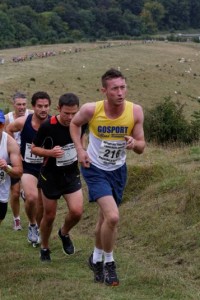Love them or hate them at some stage in road or off-road running a hill will be encountered. Learning the techniques of tackling the hills will prove to be beneficial and could even make them enjoyable. Introducing hill running into a training program is highly recommended as it can make you stronger, faster and enhance running technique.
Not only does hill running help develop the cardio vascular system it also improves leg muscle strength and can enhance the stride.
An important point to remember and focus on in running up or down a hill is to maintain the same effort as running on flat ground. The pace will vary but effort should stay the same. Trying to increase pace running uphill will lead to early fatigue.
Running Uphill
Correct posture is a key requirement to running uphill. A tall and upright stance with high hips should be maintained, look forward, never down and ensure the shoulders are relaxed. As the gradient increases the stride length will shorten. Arms should drive backwards positively. With the leading leg aim to get the hip, knee and ankle as close to 90 degrees as possible. Whilst the rear driving leg i.e. the one on the ground will have the hip, knee and ankle extended upwards, this is known as triple extension. The foot should always land naturally on the forefoot.
Running Downhill
Now is the time to accept the benefits of gravity. However, running downhill needs to be controlled. Posture remains important; a tall and upright stance with a slight forward lean, never lean backwards, high hips should be maintained. Shoulders to be relaxed with the head looking forwards. Stride length and cadence will be dictated by the terrain, it is important not to over stride. Arms will be used for balance. The front active foot should have minimal contact with the ground just adding force when required. Whilst the rear leg should have active recovery coming high underneath the butt.
Hills for training
There are a variety of training sessions that can be implemented using hills ranging from building strength endurance to improving speed. These can be built into your training schedule depending upon your specific goal or target.
“Running hills breaks up your rhythm and forces your muscles to adapt to different stresses. The result? You become a stronger runner.” – Eamonn Coughlin

